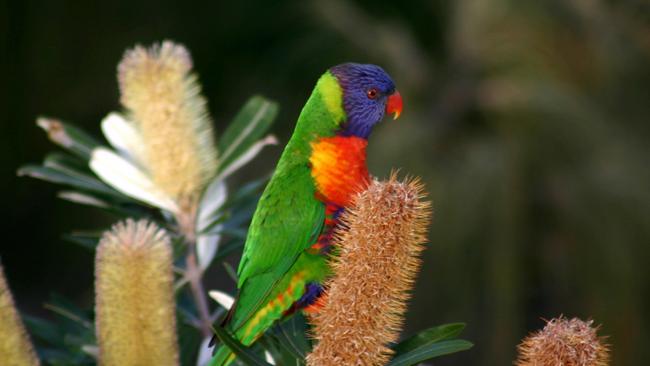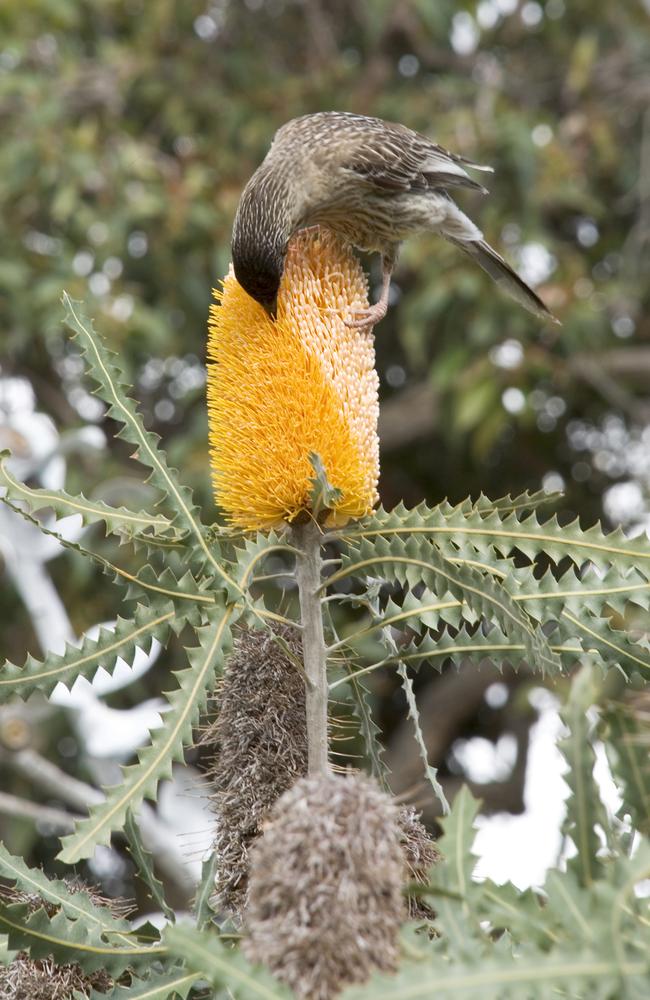What you can plant to help wildlife after the recent bushfires
Drought and bushfires have wiped out many sources of food for Australian wildlife. Here are some native plants you can put in your garden to help.
U on Sunday
Don't miss out on the headlines from U on Sunday. Followed categories will be added to My News.
In search of native plants this Australia Day long weekend? With drought and bushfires devastating wildlife food sources, planting natives is a practical way you can help.
There is a feel-good factor when it comes to native plants, but this quickly turns sour if plants fail to perform. The problem is rarely the plant, but more the perception that native plants are the same and cope with any conditions.
In horticultural terms there is a difference between well-drained and just plain dry. Well-drained means water moves easily into and through the soil, passing beyond plant roots even after a torrential downpour. Dry soil is often so compacted, water repellent and lacking in organic matter that moisture fails to penetrate.
A garden that is never watered may be dry most of the time, but waterlogged when rain occurs. It is also common to assume that sloping sites are well-drained, but clay banks hold moisture for a long time.

Choosing the right native for your soil type is key to success. Bottlebrush (Callistemon species) love moisture. The tall, weeping street trees (Callistemon viminalis) you see thriving despite the dry, do so because their deep roots tap into subsoil moisture provided by drains and road run-off.
Lilly pillies (Syzygium species) are good companions for bottlebrush because they also love soil moisture. Use them in areas of the garden where water naturally drains to. Gardens composed entirely of imported landscape soil generally hold insufficient moisture to keep either of these species happy.
Banksia offer a diversity of species, but the swamp banksia (Banksia robur – 3.5m) is the only species that tolerates poor drainage and clay. Perfect drainage is the key for success with seed-grown Wallum banksia (Banksia aemula – 6m); coastal banksia (Banksia integrifolia – 8m); dwarf banksia (Banksia oblongifolia – 3m) as well as with cutting-grown banksia cultivars.

Grevilleas are good companions to banksias. Seed-grown species including the dwarf silky oak (Grevillea banksii – 3m, red flowers) and fern-leaved grevillea (Grevillea pteridifolia – 6m, golden blooms) are resilient and long lived. There are numerous cutting-grown, shrub grevilleas to choose from. Shrubs are shallow rooted however and will suffer if they receive no water at all during dry times. As a rule, ground-cover grevilleas are less successful in humid climates.
For flower appeal, look for the holly fuchsia (Graptophyllum ilicifolium, 3m). Fuchsia perfectly describes the colour of its massed spring blooms. Good drainage is essential, but once established, this species is incredibly drought tolerant.
For hanging baskets, pots and small gardens, the ground-hugging cut leaf daisy (Brachyscome multifida – 30cm) is a good choice. This pretty daisy comes in blue and pink selections. It is short lived (12-18 months), but any stems that develop roots can be used to grow fresh plants.
The coffee bush (Breynia oblongifolia – 3m) has soft, fern-like foliage. It makes a good substitute for a potted Japanese maple as well as being equally happy in a garden.
Native ginger (Alpinia caerulea) is tough and ideal for creating a lush, tropical look without lots of water. It grows 2-3m in shade, but is more compact in a sunny spot. The purple form is particularly attractive. It is also a great potted patio feature.

Bird’s nest ferns (Asplenium australasicum – 1m) are an option for well drained, semi-shaded areas or even indoors. The prickly rasp fern (Doodia aspera – 50cm) is an under-utilised ground cover for moist shaded areas or pots.
Grafted finger limes (Citrus australasica) top the list of desirable edible natives. Give finger limes the same seasonal application of nutrients as you would standard oranges and lemons to maximise your harvest.


